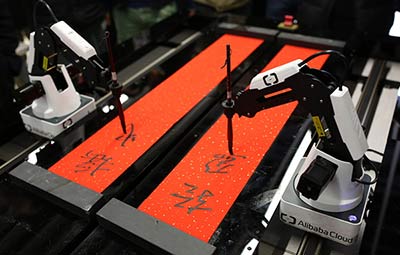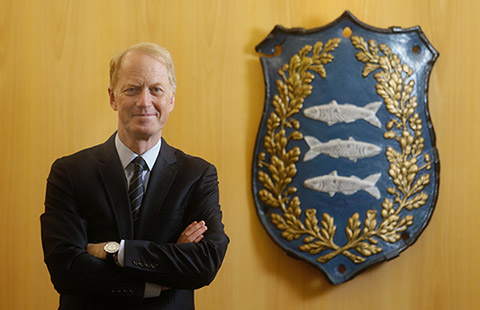Ford warns bumpy reinvention may cut future profit in half
Ford Motor just flashed a warning to investors that it's hard to keep profits rolling in a slowing market while also trying to reinvent your company for an autonomous age.
Profit may fall by half in the first quarter, a bigger drop than analysts predicted, as Ford ratchets back production and spends more to create the self-driving cars and electric vehicles the company has said will drive its future.
Ford shares in this struggle with automakers facing declining sales and rising costs to reengineer themselves in a new era of mobility.
BMW said earlier this month that profit margins are shrinking as it pours money into developing self-driving cars.
Ford Chief Executive Officer Mark Fields has said profits will fall this year before rebounding in 2018 as the company spends big to take on interlopers such as Alphabet Inc's Waymo and Uber Technologies.
"Everything is on the table" as Ford re-engineers itself for the future, Chief Financial Officer Bob Shanks told analysts and investors in New York on Thursday.
"We've been working on this now for quite a number of months and I think we're starting to form some interesting points of view in terms of the direction that we might take."
Ford surprised Wall Street ahead of the New York meeting by forecasting first-quarter adjusted earnings per share may be 30 to 35 cents. That's well below the 47-cent average estimate of analysts surveyed by Bloomberg and the 68 cents the company earned a year earlier.
The projections were meant to add clarity to what Ford has been saying for months: That profit will slump in 2017 as it invests in autonomous and electric vehicles, and as a used-car glut hurts its financial-services unit.
Full-year pretax profit will slip to about $9 billion from last year's $10.4 billion, with most of the drop-off happening this quarter, Shanks said in a phone interview before the meeting.
"From this point forward the comparisons will be more in line with what we saw last year," Shanks said.
That didn't placate investors who traded Ford shares down by as much as 2.3 percent in New York. "This is one of the most significant quarterly misses vs. consensus produced by Ford in quite some time," Adam Jonas, an analyst at Morgan Stanley, wrote in a report on Thursday.
"The full year pretax target of $9 billion implies some 'catch up' in the remainder of the year which may prove challenging given sector-wide deterioration."
Higher investment and commodity costs, slower sales primarily due to a pullback in deliveries to fleet customers and unfavorable exchange rates are among the factors Ford cited for its expected earnings slump in the first quarter.
Ford had already planned a 4 percent reduction in North American vehicle production during the first three months of the year, as it's anticipated demand would slow following seven years of growth.
The automaker touched of skittishness among investors late last year by warning that falling used-car prices would impact its financial-services unit this year.
Shares of Ford, General Motors and Fiat Chrysler Automobiles NV fell earlier last week after Ally Financial warned profit growth may slow due in part to an expected 5 percent decline in used-car prices this year.
The performance of auto loans and leases will continue to deteriorate this year, as credit losses increase and used-car values fall, Fitch Ratings said on Wednesday.
Ford has lowered its outlook through 2019 for what it expects used cars to fetch at auctions, due to the glut of models coming off lease over the next few years.
"We expect auction values to be lower year over year for the next several years, reflecting the growth of supply coming back from lease," Marion Harris, chief financial officer for Ford Motor Credit, told analysts.
While dealing with everyday issues like used-car values, Ford also is under pressure to play a role in the future of transportation.
The second-largest US carmaker has promised to put 100,000 robot taxis - without steering wheels, gas or brake pedals - on the road in four years.
It's also investing $4.5 billion to convert 40 percent of its lineup to electric vehicles and hybrids by 2020.
Bloomberg

















